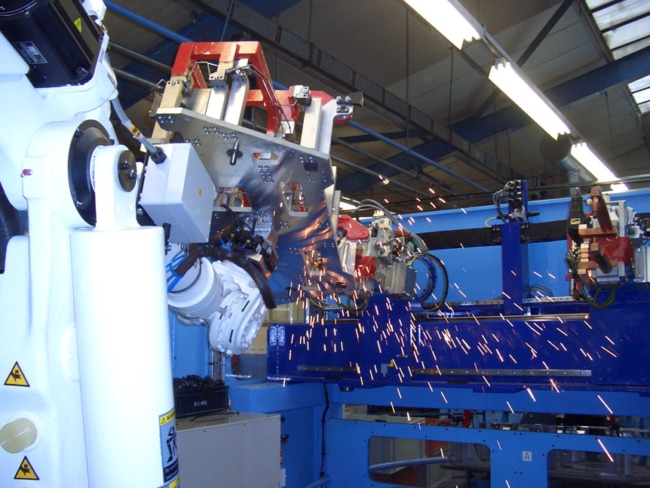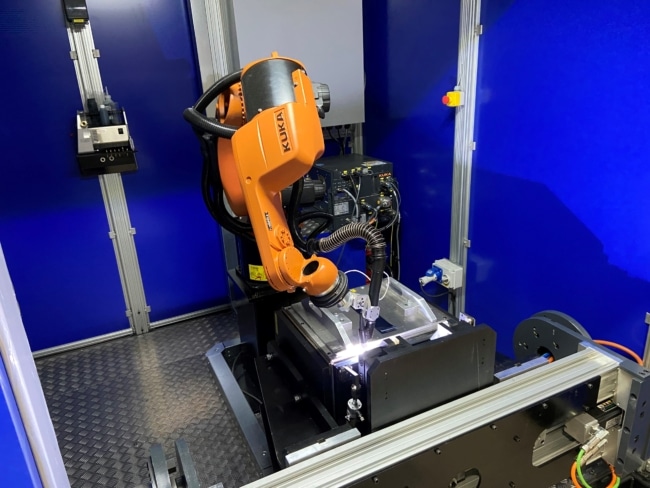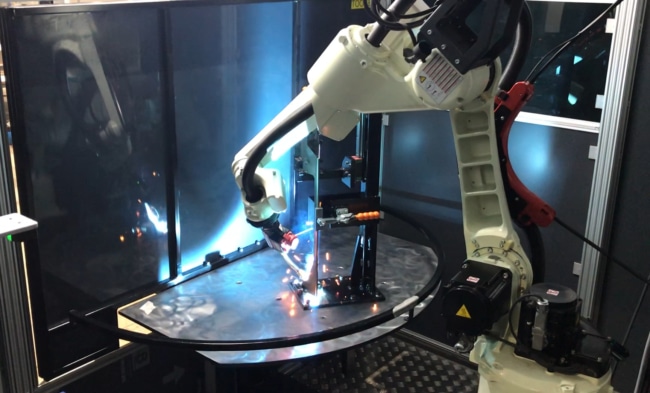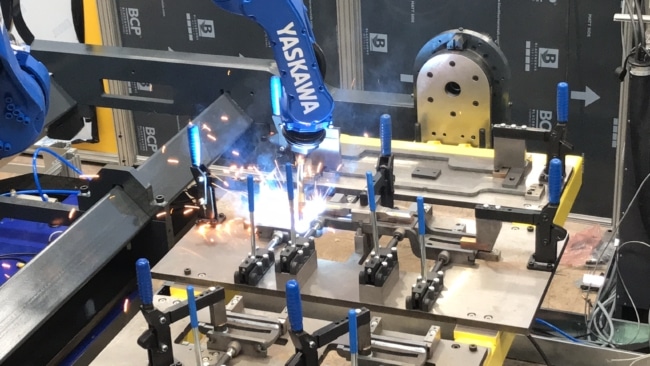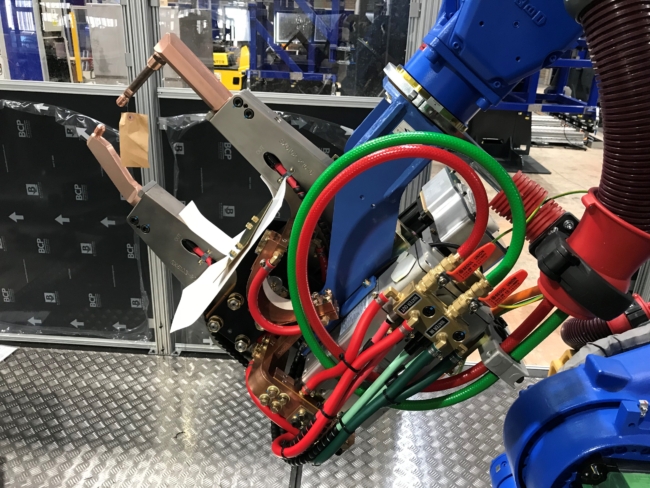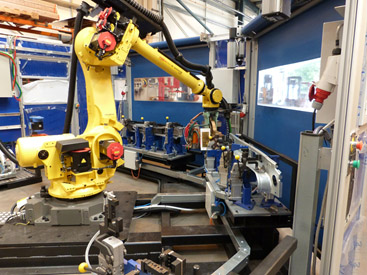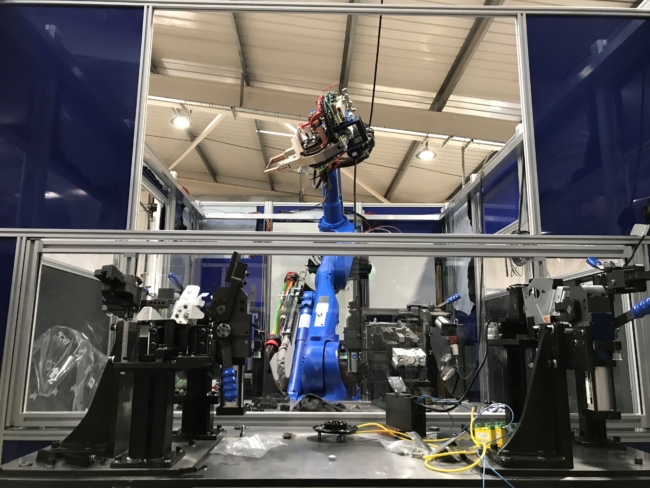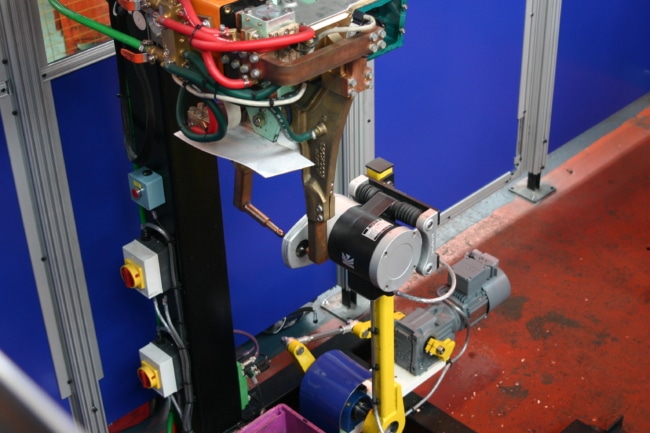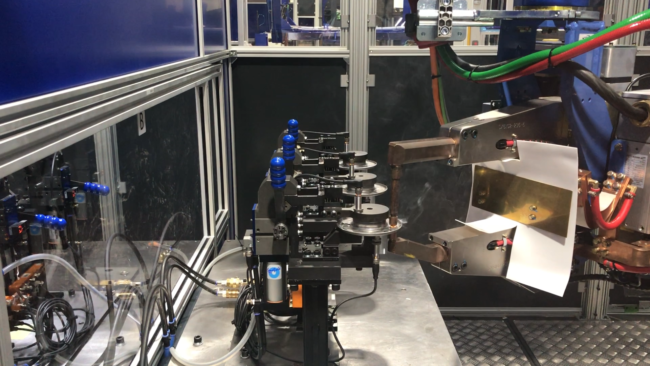Manufacturing & Automation
Strike an Arc
In a process that forms an electric arc between component and electrode, arc welding is an extremely diverse and versatile manufacturing process. With a huge variety of arc welding variations, from traditional MIG and TIG to more concentrated arcs such as plasma and laser or lower temperature welding techniques such as CMT, whatever materials needing to be arc welded, Bauromat’s experience will ensure that there is a solution for you.
From heavy fabrications, clean automotive welds or quality aerospace parts, Bauromat has provided welding solutions for all types of welding techniques. Each method of arc welding has its own benefits, with Bauromat’s welding expertise guiding all customers down the correct path for quality results.
Find out about our standard concepts here.
Robotic Welding Services
If you’re manufacturing a high volume of parts on a daily basis, quality and consistency are key. But what if your current techniques aren’t up to scratch? Are you finding that there are peaks and troughs in what you are producing? These are common issues found throughout the manufacturing sector.
The simple solution to this common problem is addressing your manufacturing process. Consider robotic automation, consider the latest manufacturing innovations and look towards industry 4.0.
Robotic welding is not only an option that helps meet the high standards expected of your business, it can aid growth within your company, too. Robotic automation opens up opportunities for your workers to upskill and learn new, essential skills; you can make more products faster and at a higher standard afterall.
Need a Spot of Welding?
Combining high pressures and electric currents, spot welding is a cost-effective welding solution that combines multiple metal components together. Commonly used in automotive for sub-assembly components, Bauromat is a leading spot welding automated solution provider.
A form of resistance welding, spot welding is just the start of welding possibilities with other cutting edge welding technologies available, including projection, seam and friction stir, all of which can be installed with industry 4.0 ready software, allowing you to monitor the quality of every weld.
With an extensive back catalogue of spot and resistance welding automated solutions throughout a number of leading automotive suppliers, customers can expect service and result of the highest quality with all spot welding enquiries.
Robotic Welding: The Advantages
Producing parts quicker, more consistently and to a higher standard. That’s just the tip of the iceberg when it comes to robotic welding.
Positioning your business at the forefront of industrial change means that as potential customers look for suppliers, your familiarity with the latest technology puts you ahead of your competitors.
Taking the repetitive tasks away from human employees, robotic welding also helps upskill your staff, providing them with the tools to learn more skills, helping both them and the business grow. These advantages of robotic welding are crucial to understand and are often overlooked as people see robotic automation as a negative.
What Different Types of Robot Welding are There?
Whatever and however you can weld manually, you can do so with a robot. From high volume, small components to large one offs, if you want to weld it with a robot, all you need to know is basic programming.
From arc welding including both, MIG and TIG as well as laser welding, robots can also do resistance welding. With spot welding one of the most common forms, robots are also capable of the likes of friction stir, too.
Beyond metal welding, plastic welding is also possible, too.
Robotic Welding vs. Manual Welding
While it’s easy to assume that robotic welding is a like-for-like replacement for manual welding, it’s not that binary. A robot welding system does help your parts get manufactured quicker, more consistently and to a higher standard, but you have to look at the project as a whole.
Once you work out the desired volume, and the time frame, you can understand the required weld time. Combining this with the intricacy of the parts, the dexterity of either the robot or the human operator, it becomes clear whether manual or robotic welding is the better option.
The best way to find out about both manual and robotic welding is by speaking with robotic automation experts who can help you better understand your own requirements.
Maintaining A Robotic Welding System
Robotic welding systems can be running continuously for months on end, particularly in high volume production sectors such as automation. It’s for this reason that robotic welding systems need to be regularly serviced and well maintained.
Think of a robotic welding system like a car. Without regular servicing, or checks of the brake fluids and hydraulics it’ll soon stop working; robotic automation is exactly the same.
The way around this is by end of shift checks where everything is logged and maintained. On top of this, you need service contracts which mean your system will be regularly visited and maintained by the manufacturers themselves.
Find out more about robotic servicing here.
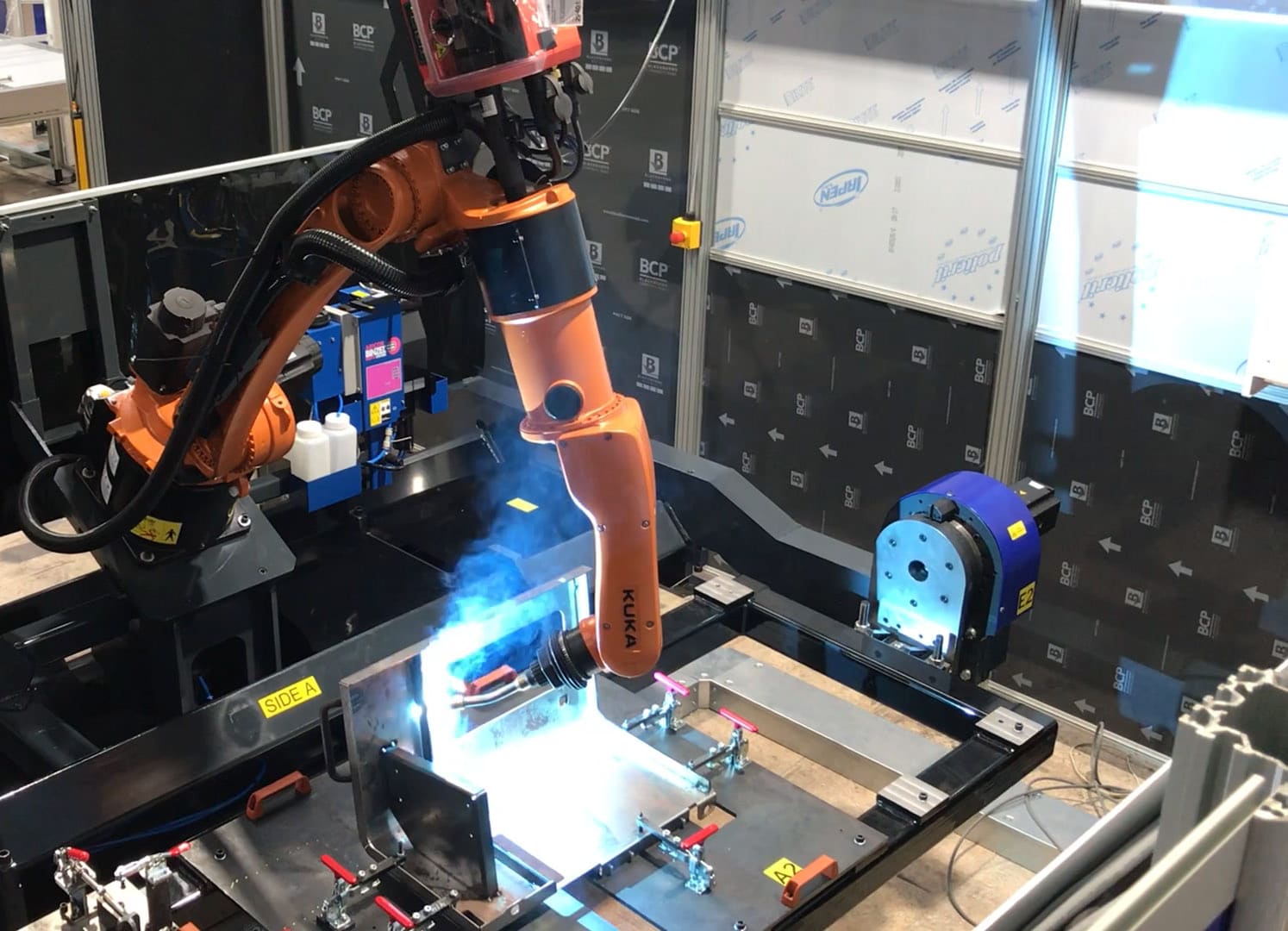
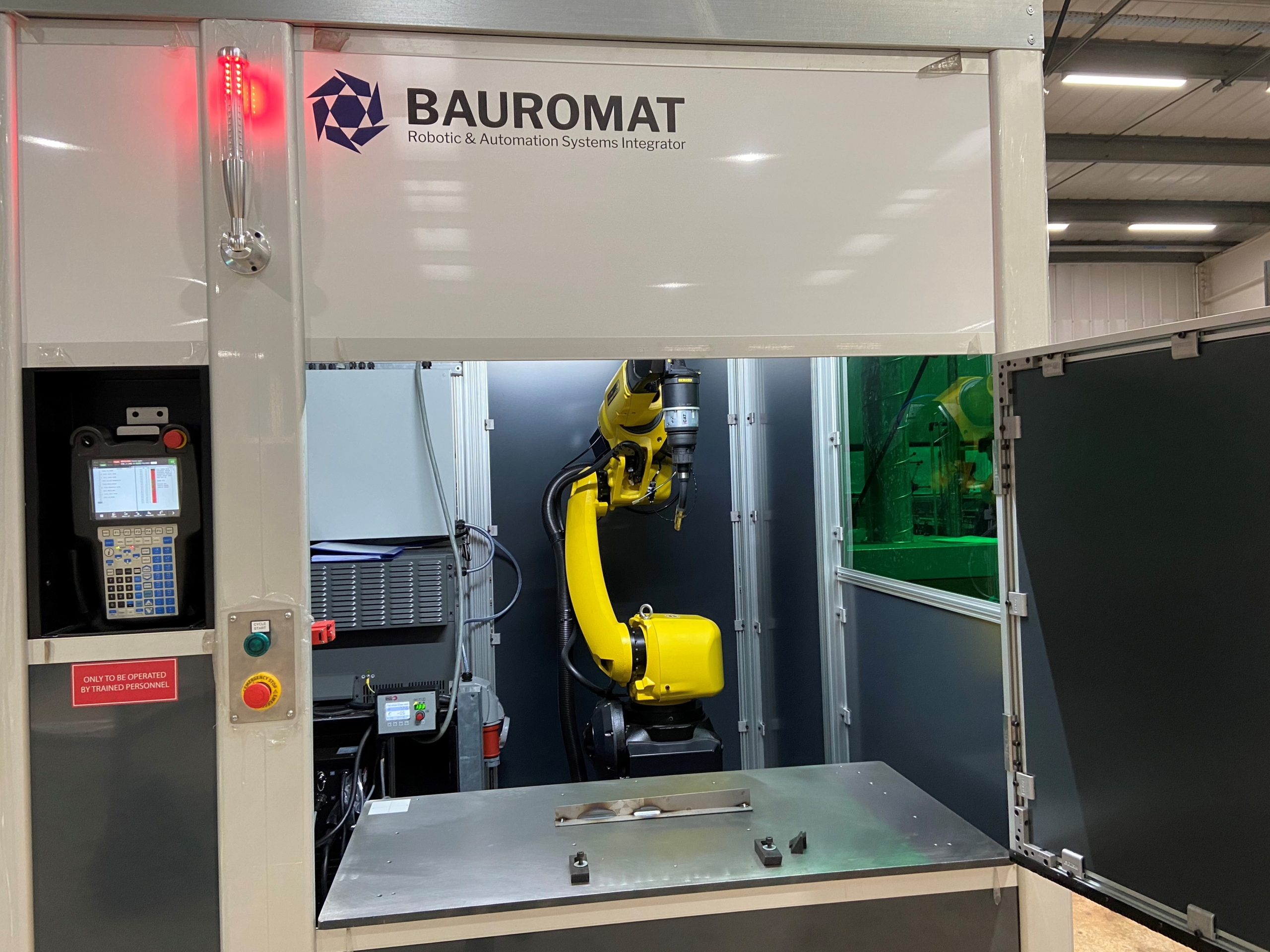
Industry 4.0
Industry 4.0 is something of a buzzword in manufacturing. In fact, it’s been a buzzword for over a decade with the first recorded use of the word being used in 2011!
Referring to the next industrial revolution, industry 4.0 refers to a number of things, of which robotic automation and therefore robotic welding is one. Industry 4.0 is about streamlining the manufacturing process and making it as seamless as possible through the likes of AI systems to control factories or robots to more consistently produce products of higher quality.
Industry 4.0 is entirely up for debate but from a manufacturing point of view, a robotic welding system is a great option to get your business moving in the right direction.
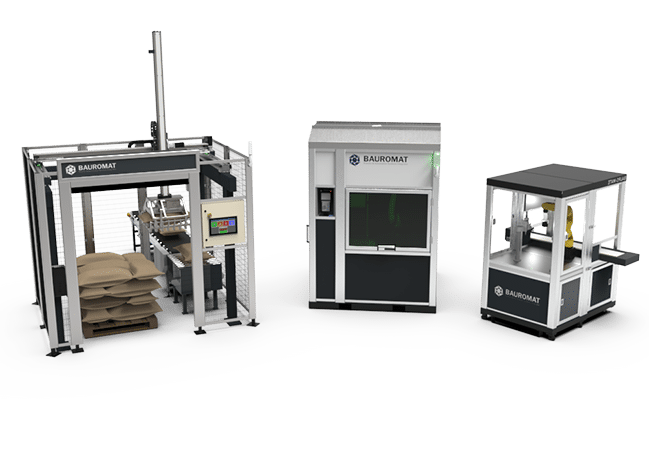
Standard or Bespoke
Bauromat has a range of standard concepts for its automated arc and spot welding solutions (BAURO-Arc and BAURO-Spot) which offer a diverse range of solutions for products ranging in all sorts of shapes, sizes and volumes. All concepts feature different component positioners offering varying levels of motion and flexibility but can be customised at any level depending on the customer’s specific requirements. You can read more about our standard concepts here.
If an automated requirement doesn’t seem like it can be designed around a BAURO-Arc or BAURO-Spot concept, then Bauromat won’t stop to ensure a solution can be found. Bespoke systems are often part of the automation process and Bauromat has the capability and experience to create entirely bespoke designs for automation requirements of any size or scale. With an in-house team of designers, engineers and robot programmers, all aspects of your solution can be designed specifically for bespoke purposes. This links to our philosophy of ‘integration from day one which you can read more about here.
HMI
Like all Bauromat systems, our welding solutions feature a custom-designed HMI system, built from the ground up, every HMI refers specifically to the customer's automation solution. Featuring a sleek interface and touch screen, the HMI is industry 4.0 ready with equipment effectiveness management systems as well as remote access and a tooling wizard that allows systems to be reprogrammed without the need of expensive PLC engineers.
(You can find out more about BOS (Bauromat Operating System here)
Not Sure What You Need? Let Us Do Trials For You - Contact Us
Welding & Laser FAQ's
A welding robot is an industrial robot designed especially for the purpose of automated robotic welding, be it, resistance, arc or laser. Depending on the size of the project, welding robots come in a variety of sizes with different lengths or arm.
Robots are used in the welding industry to help increase efficiency, quality and consistency. Welding robots help manage volumes that wouldn't be possible manually and help prevent workers from being harmed by welding industry fumes.
A robotic welding system features a range of automation products to increase efficiency. A welding robot would be included, along with a welding power source and other essential robot welding equipment.
